Pillows Pillows Pillows
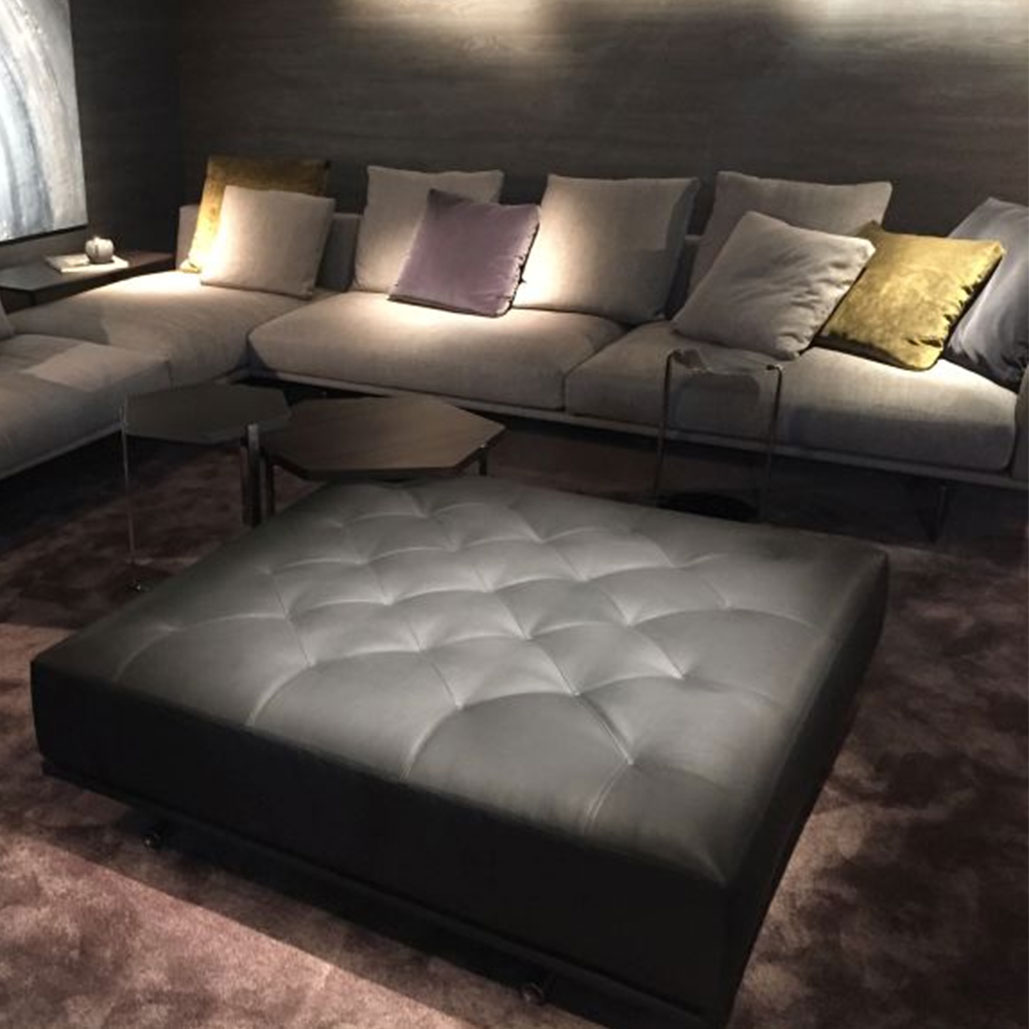
There are so many pillows and fillings out there, it can be hard to know which one might be a good fit for your project. One great place to start is to do a little research and figure out your options.
Two popular types of pillows are down and feather pillows. In some cases, these pillows will be marketed as using down and feathers interchangeably, which gives people the impression that they are the same thing.
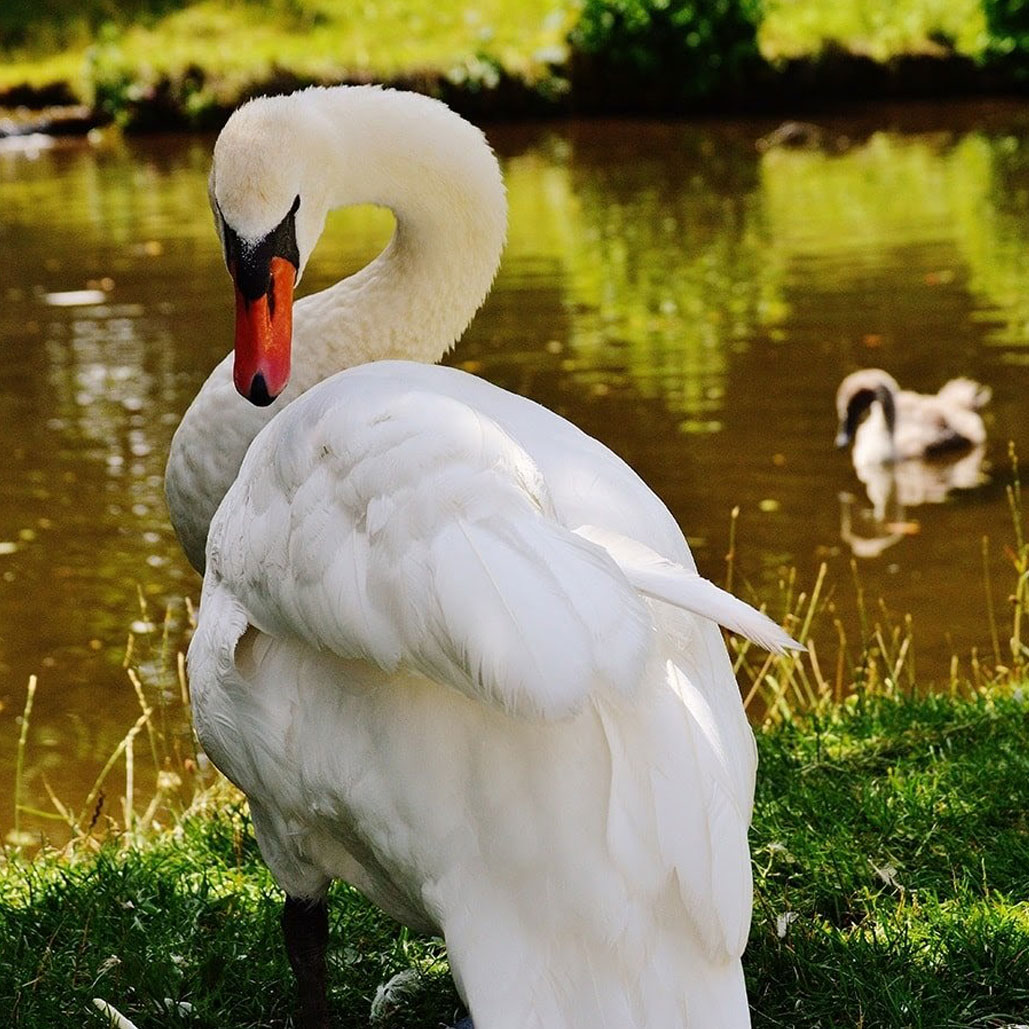
Although both types of filling can come from the same animal, the shape and feel of down clusters are quite different compared to feathers.
To help you make sense of all of this, we’ve put together a brief breakdown of down clusters versus feathers and what to look for when you’re out shopping.
Down is a soft grouping of fibers – most likely from a goose, duck or swan – that is closest to the bird’s skin and located primarily near its chest. Down can also sometimes be called the undercoating of a bird.
Down clusters have insulating qualities because of the soft fibers fan out of a central point, called a plumule, in a three-dimensional way that traps air. If you’ve ever had a piece of down come out of your bedding you may be familiar with what this looks like.
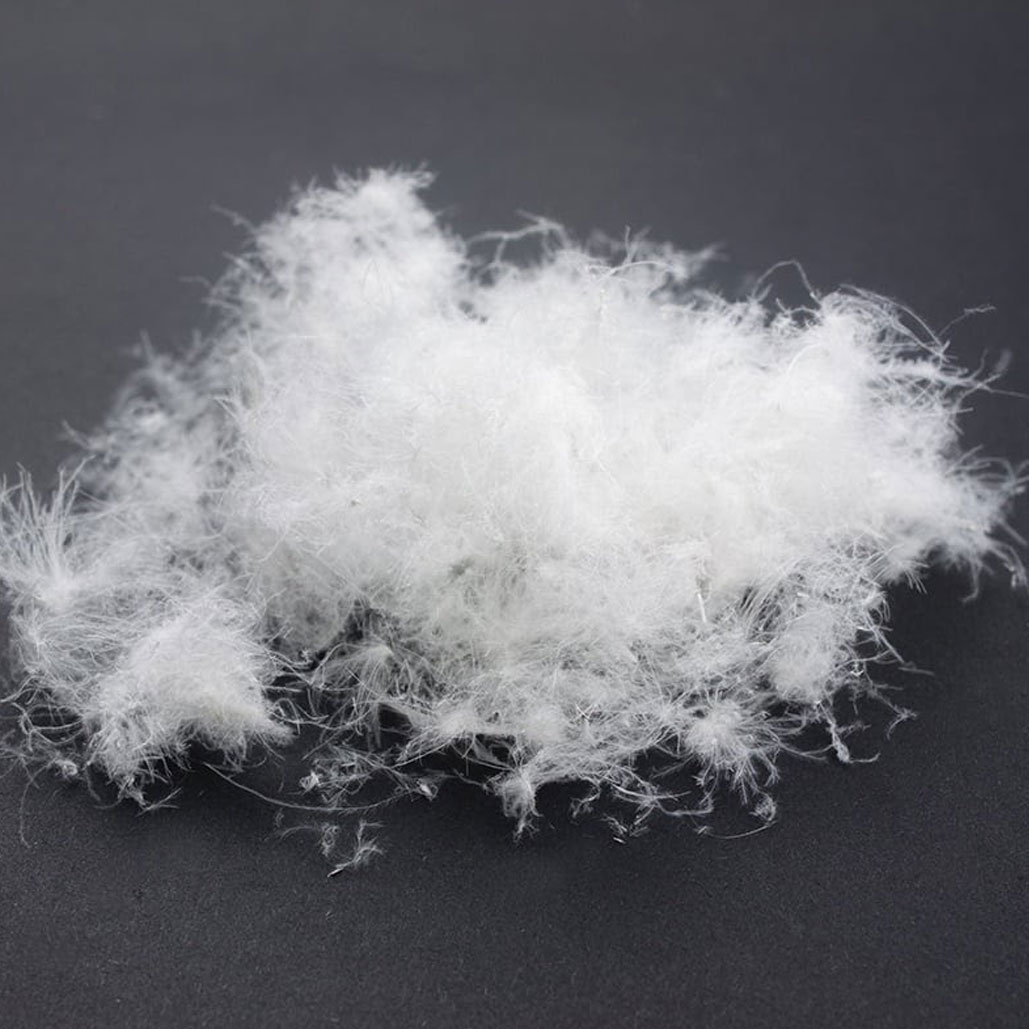
Feathers in a feather pillow tend to come from the wing and back feathers of geese or ducks. They can still provide a soft and fluffy feeling but will retain their shape longer than down.
Unlike down, which is viewed as more of a cluster, a feather is flatter, heavier, and contains a quill that runs down the middle (which you may have felt poking out of your pillow on occasion).
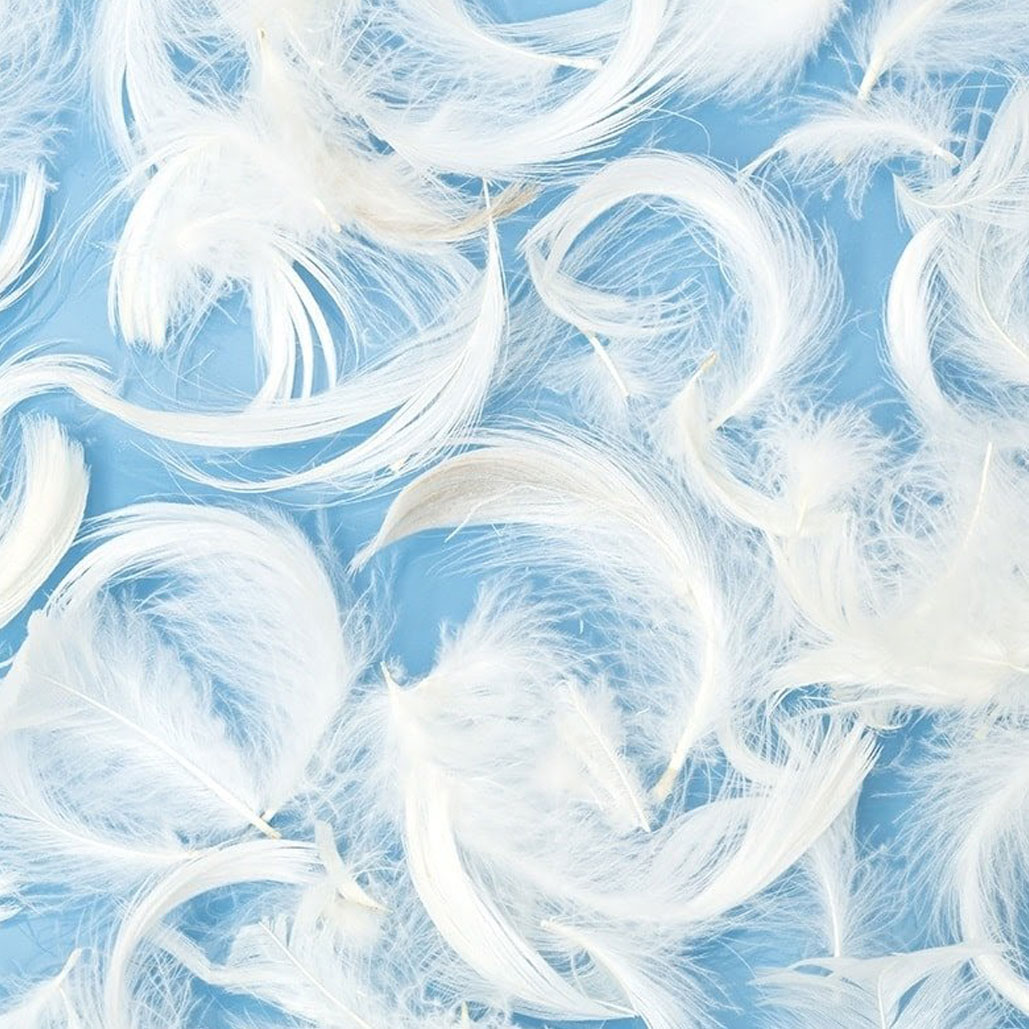
We use 95/5 fill 90/10 fill, down-alternative fill, and polyfill in our pillows.
The term ‘down alternative’ refers to a polyester microfiber material used in pillows and bedding that is designed to mimic the lightness and softness of authentic duck or goose down. Unlike real down, which can trigger allergies for some individuals, down alternative is completely hypoallergenic.
If you are wanting outdoor pillows then you need to use poly fiberfill made with a special blend of non-allergic, multi-layered polyester fibers. This is an ideal choice for homeowners and clients that want their outdoor area to have a little bit of comfort, style, and color to update their outdoor furniture. Standard Poly Fiber fill is designed to be non-absorbent and mildew resistant, which also allows for no saturation during a heavy downpour. Water will flow right through the cushion and drain and dry quickly for “no” to “low” maintenance. You must pick an outdoor fabric for this to be successful. Once you have determined what and where your pillow will be displayed you can determine the fill you want to use. You then can begin the process of deciding what size pillow you need. The rule is that if you are wanting a 20 x 20 pillow you need to have an insert that is 2” bigger than your pillow. So we would insert a 22 x 22 pillow into the cover we make for you. Also note that the size of pillow cover you are requesting is measured across the top of the pillow from seam to seam. You may want to go up in size if you had hoped the 20” pillow would take up 20” of space. It would be better to order a 22” x 22”.
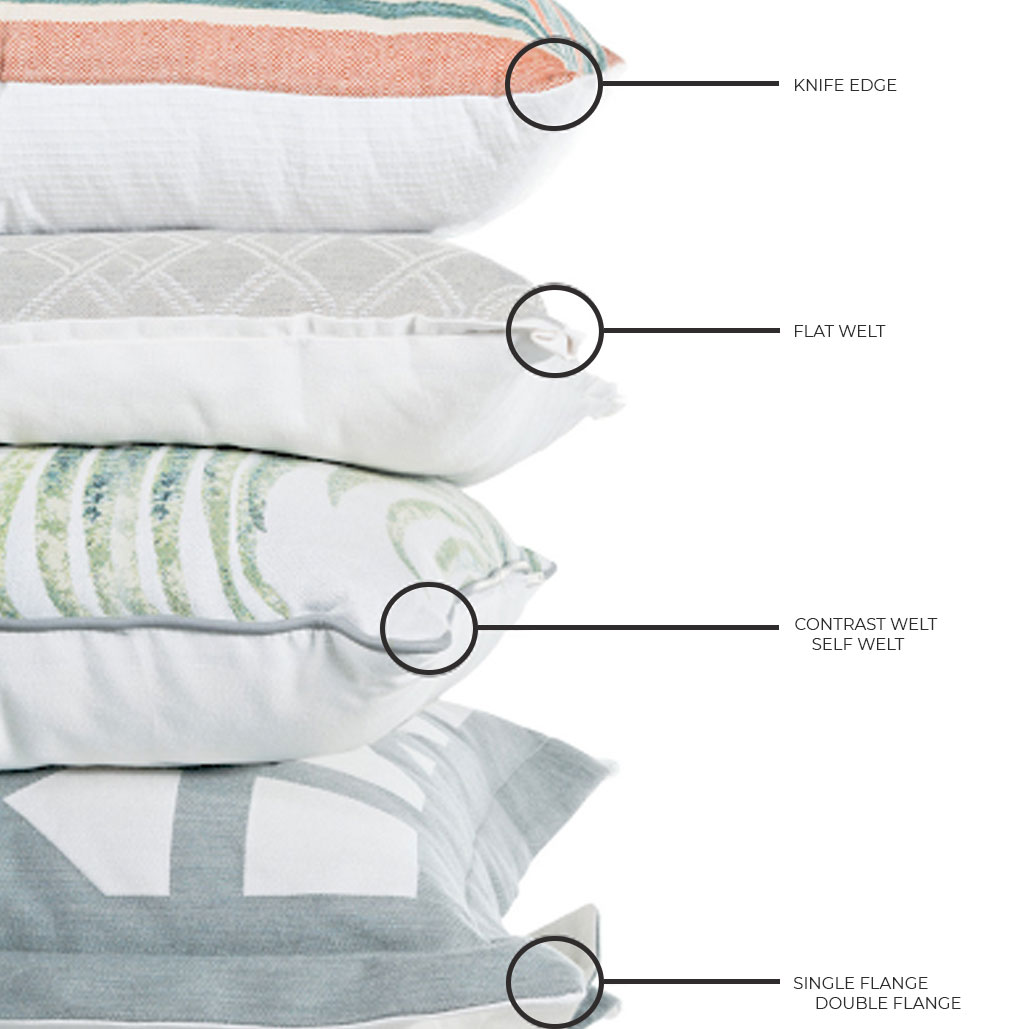
Some of the other details that you would need to specify is how you want the edge of the pillow finished out. One of the most popular choices is what we call knife edge. This is the top one in the above photo. This means there is just the seam of the back and front of the fabric along the edge of your pillow.
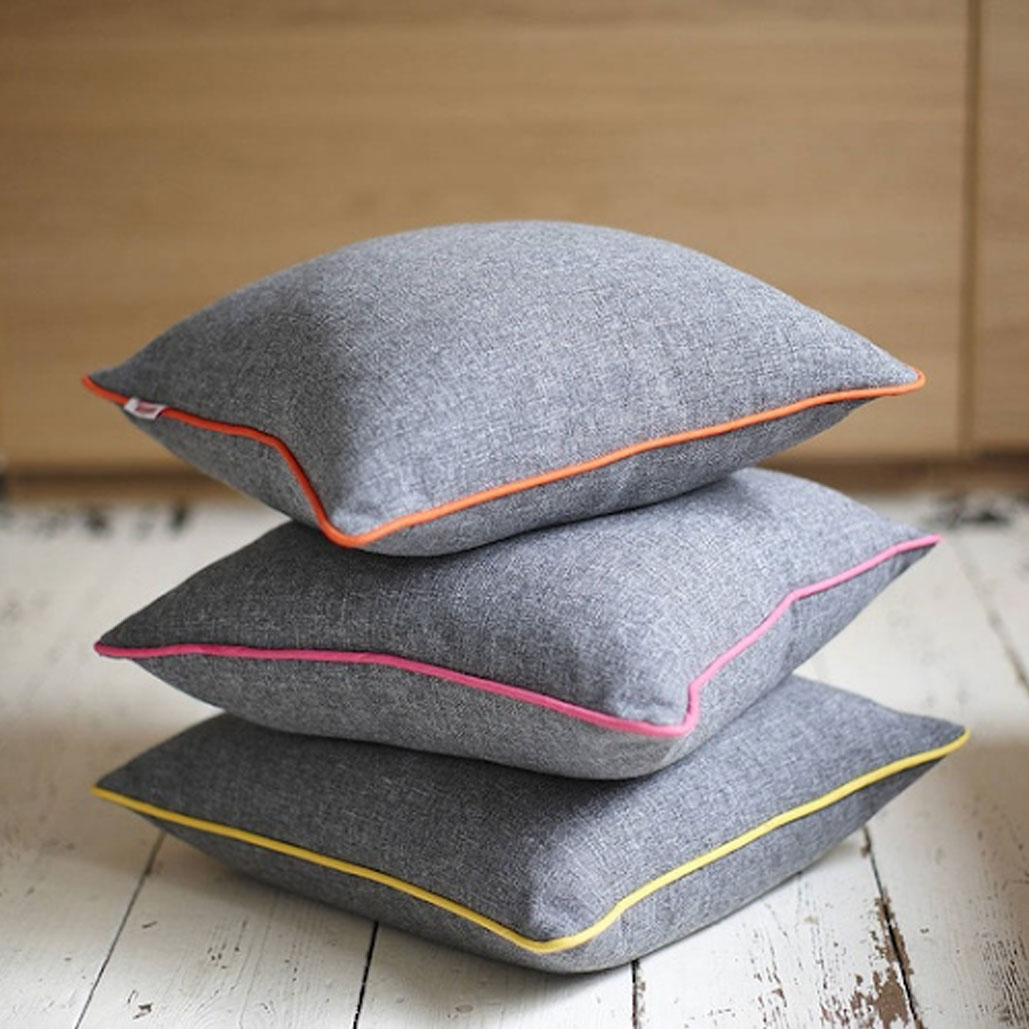
You can also have a contrast welt from an entirely different fabric. A welt is a detail which is created by cutting the fabric on the bias and sewing it around a cord. This cord can either be made from the same fabric and in that case we say that is a “self welt”. If you want it in a contrast fabric we call that “contrast welt”. You just need to be sure to specify that in your workoder or spec sheet you give me so it can be estimated correctly.
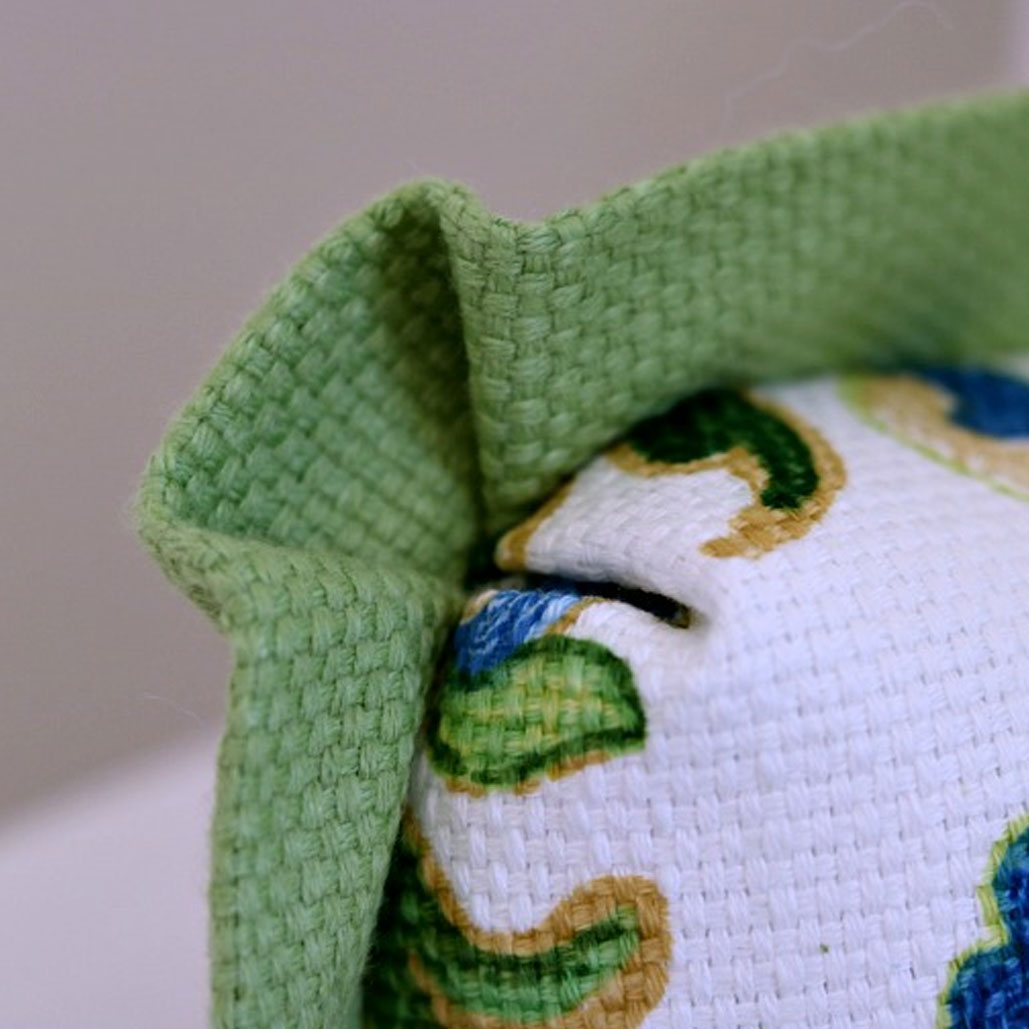
You can create a beautiful detail by using a contrasting fabric to make a flange and then butterfly the corners. This is similar to a welt without the cord.
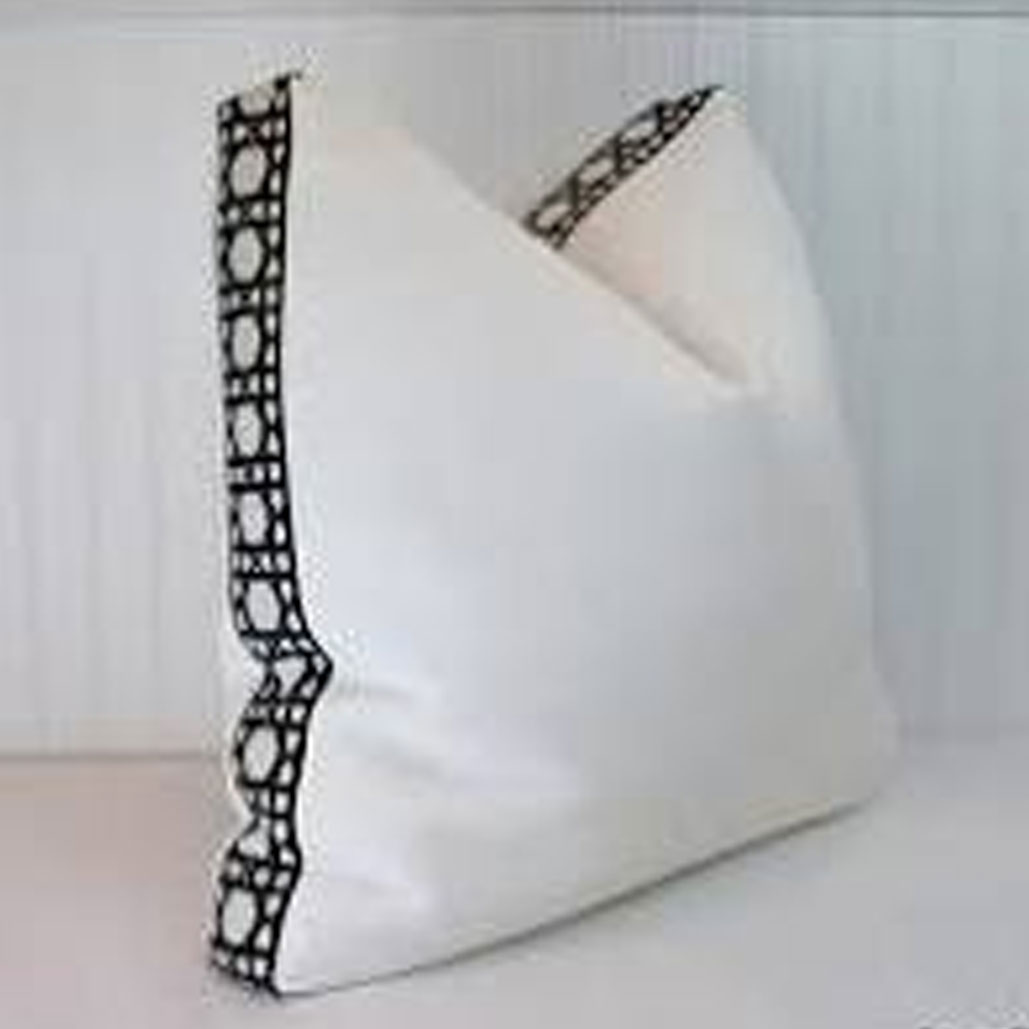
Above is a boxed pillow. A tape trim in this case was used to create a contrast boxed area but you could use the same fabric as the face and back or use a contrast
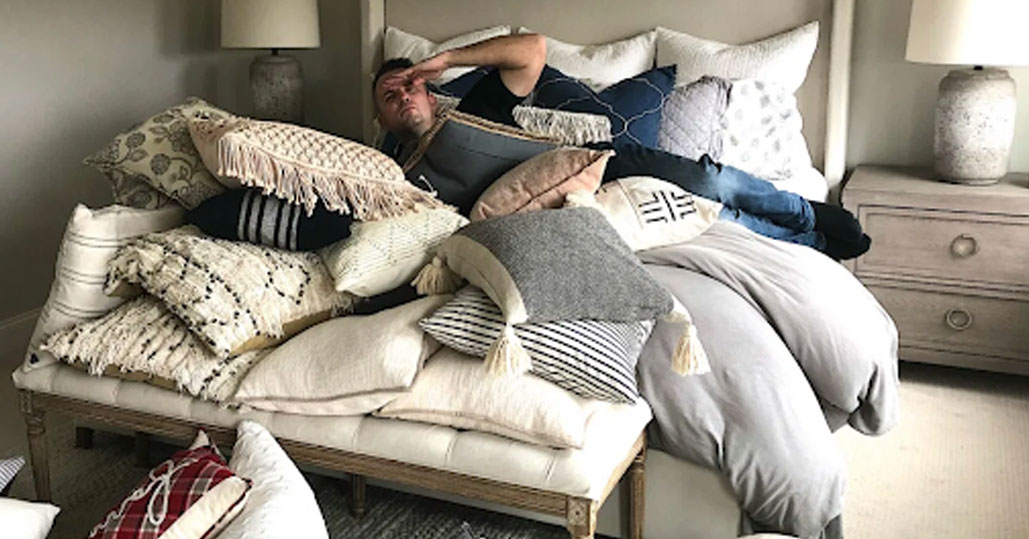
In the past it was common to have as much as 10 pillows to put on your bed every time you made it up. It was a daunting chore for even the best of us. It is said: “If you make your bed every morning you will have accomplished the first task of the day. It will give you a small sense of pride and it will encourage you to do another task and another and another.” “By the end of the day, that one task completed will have turned into many tasks completed.” But who wants to take all those pillows on and off your bed?
Well things have changed a bit and one of the most popular bedroom pillow is called a boudoir pillow. Instead of pilling on the pillows on beds like we used to, beds have become more simplified by the use of a long pillow that is approximately ¾ of the width of the bed.
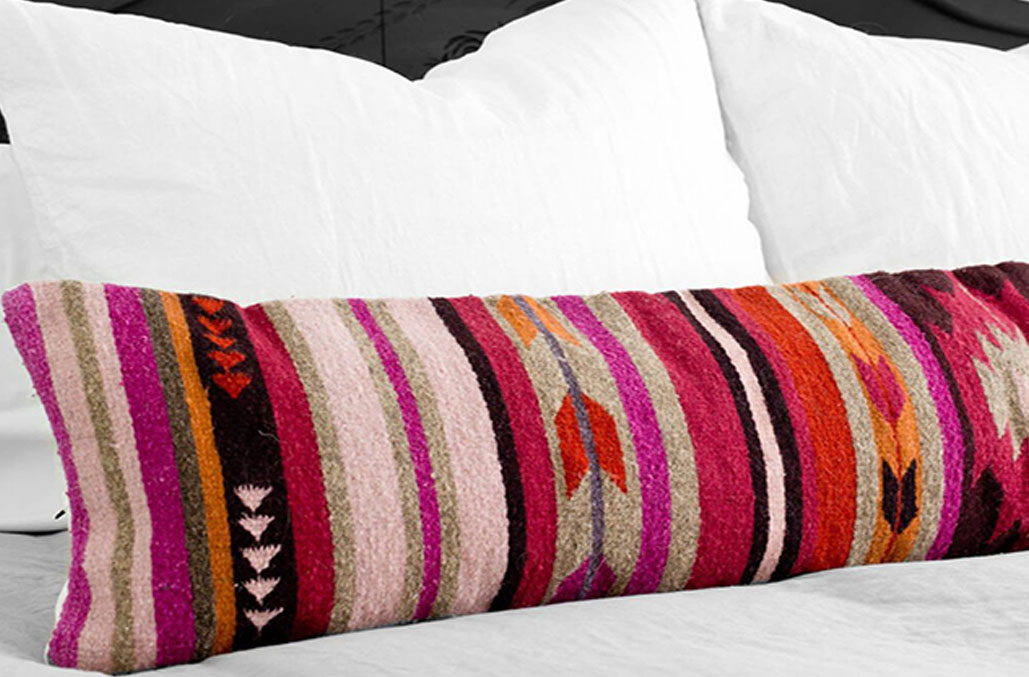
So wherever you are putting your pillows there are a few things to consider. I hope this was helpful in giving you the proper terminology to feel comfortable specifying your pillow orders. Always remember I am here to help you. That is my job, that is my passion. I love helping others succeed.





